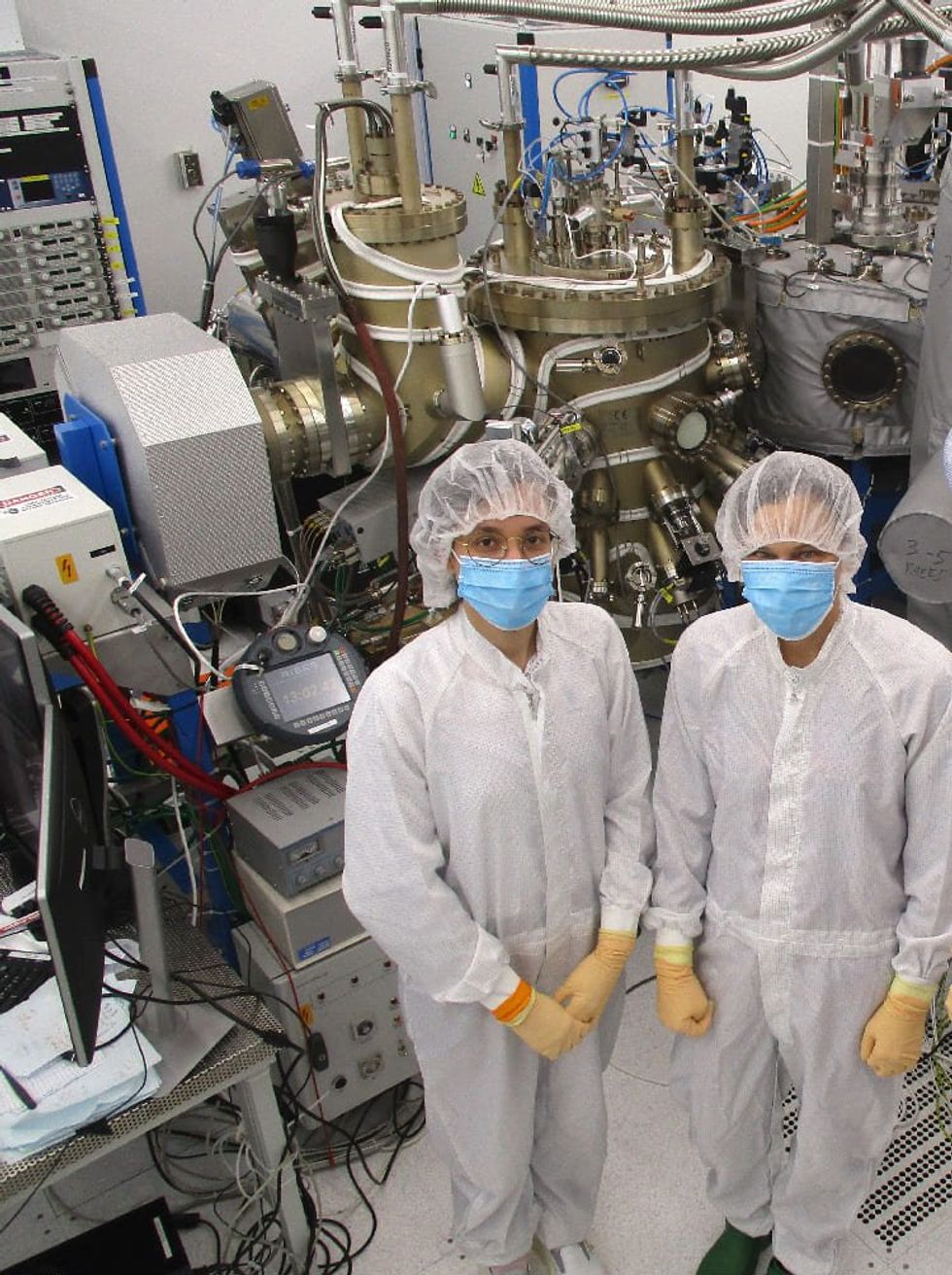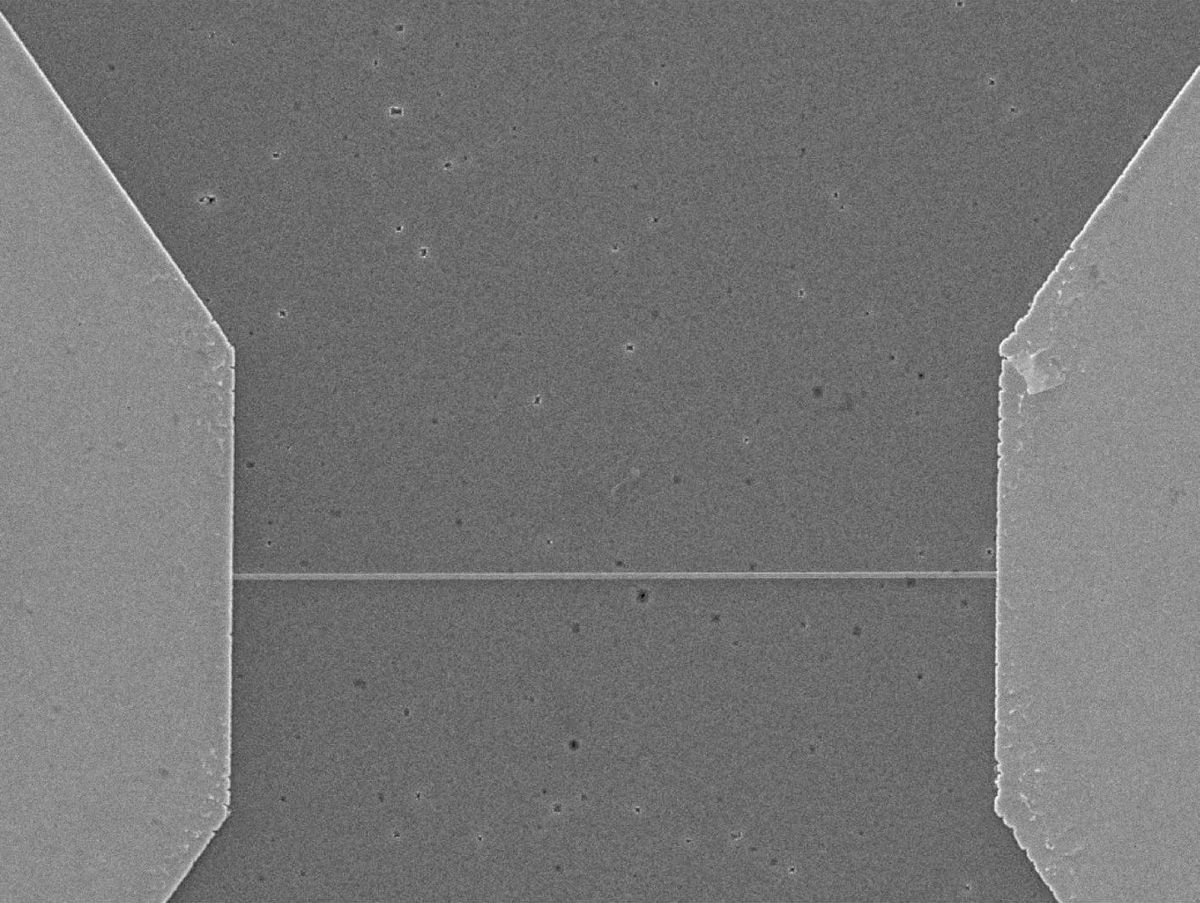In normal metals, electricity flows in the form of charged particles. Now scientists may have found the first direct evidence that in so-called strange metals, electricity may flow as a mysterious fluid instead. In a paper published in Science, researchers suggest this electronic fluid could possess extraordinarily low viscosity, potentially leading to unusual applications.
In conventional metals, electric current flows in the form of quasiparticles—ripples that move inside lattices of atoms much like particles zipping through space. In addition, in regular metals, the resistance that electric current experiences typically rises in a quadratic way at low temperatures—slowly to start with as the metal gets warmer, and then faster and faster.
However, in strange metals, electrical resistance instead rises in a linear manner as temperatures rise. Many different materials display this strange metallic behavior, such as cuprates, organic molecular crystals, heavy fermion metals, and twisted bilayer graphene, among others.
Previous research suggested that current may behave in this odd way in strange metals because electrons within them may essentially possess no meaningful identity. Instead, electrons may exist in a dense state of quantum entanglement with one another, forming a kind of fluid.
“We’re not saying that electrons actually fall apart or something,” says study senior author Douglas Natelson, a condensed-matter physicist at Rice University, in Houston. “Rather, the electrons are talking to each other so strongly and so often that you just can’t describe charge flowing in terms of approximately independent electrons.”
Electrons in strange metals may essentially possess no meaningful identity.
One way to see if electricity flows in fluid or quasiparticle form in strange metals is to focus on the phenomenon of shot noise—random fluctuations in an electric current that result from the way in which electricity normally consists of distinct chunks of charge. If electricity is a fluid in strange metals, shot noise should prove unusually quiet.
Until now, direct experimental data was lacking. The kinds of shot noise experiments needed to prove this model required incredibly thin, perfectly crystalline wires to eliminate potential interference from extraneous material. Fabricating these wires from strange metals without affecting their electronic properties has proven very challenging.
In the new study, researchers experimented with YbRh2Si2 wires, a heavy fermion strange metal consisting of the elements ytterbium, rhodium, and silicon. With the help of study coauthor Silke Paschen’s group at the Vienna University of Technology, the scientists grew and tested extraordinarily thin crystalline wires of YbRh2Si2. “This is just another example of how high-quality materials growth opens up new realms of research and potential devices,” Natelson says.

The scientists found that these wires proved strangely quiet in terms of shot noise when compared with conventional metals. These findings suggest that electricity may indeed not exist as distinct quasiparticles in strange metals.
“The idea that how charge flows in strange metals may really be quite different than in ordinary metals is exciting,” Natelson says.
There are currently no clear applications for this strange metal behavior, Natelson says. However, “in some models of strange metals, the electronic fluid is supposed to have very, very low effective viscosity, which could lead to unusual device possibilities,” he adds.
Future research can explore other kinds of strange metals, “especially those that are thought to have different underlying microscopic physics, and see if they show similar noise properties,” Natelson says.
- Graphene Gives 3D Graphite Twisted Powers - IEEE Spectrum ›
- A Beginner’s Guide to Topological Materials ›
Charles Q. Choi is a science reporter who contributes regularly to IEEE Spectrum. He has written for Scientific American, The New York Times, Wired, and Science, among others.



